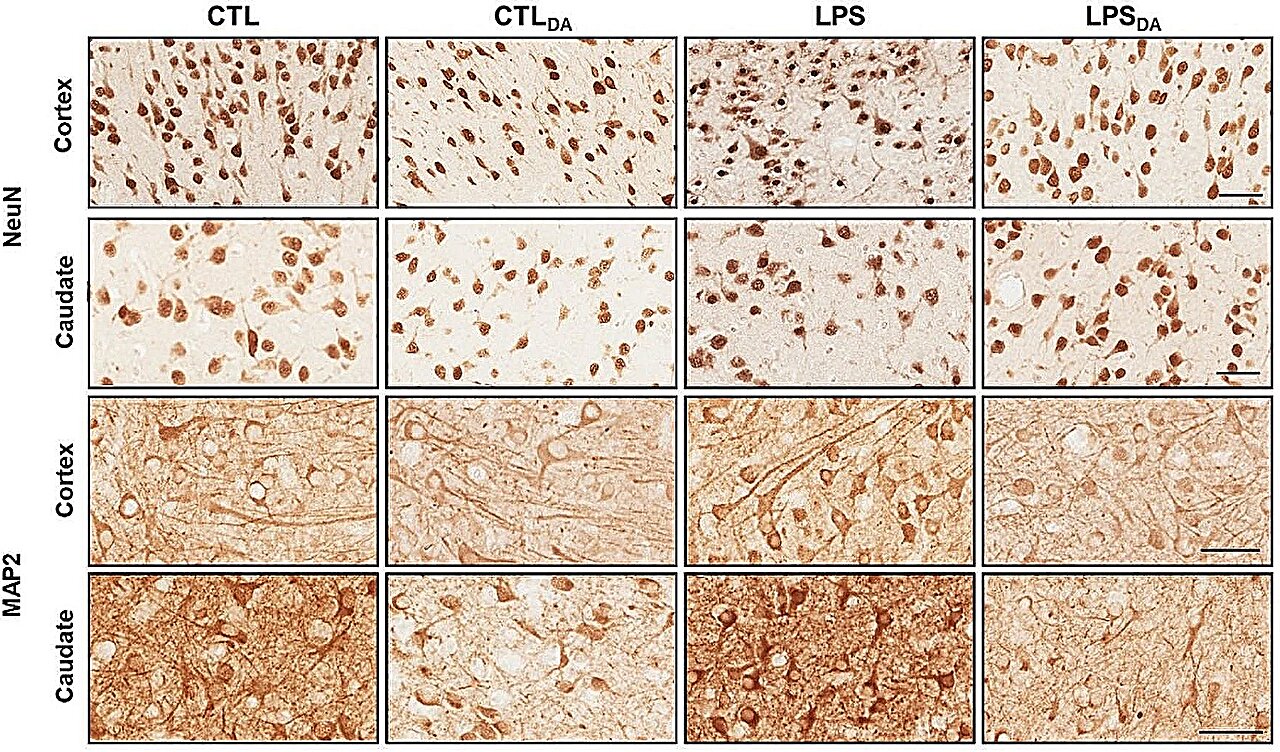
Being born preterm is a known major risk factor for life-changing brain injury, but there is still a lot to understand about exactly what occurs inside these tiny babies that can do so much damage.
Researchers at Hudson Institute of Medical Research have now uncovered a key process that causes preterm brain injury, offering hope that new, targeted treatments could be created.
Dr. Nhi Tran, postdoctoral scientist at the Ritchie Center, and Associate Professor Flora Wong, Research Group Head at Hudson Institute and Monash University, and consultant neonatologist at Monash Children’s Hospital, led the study that looked at the effects of infection before birth (intrauterine inflammation) in the preterm brain, specifically at the intersection of neurons and brain blood vessels, termed the “neurovascular unit.”
They also assessed the cerebral effects of dopamine—a drug often used to treat low blood pressure, or hypotension, in preterm infants. Their findings have been published in the Journal of Neuroinflammation.
Risk of preterm brain injury
“Nearly 10% of all newborns are born preterm, and the risk of preterm brain injury poses a major global health burden,” Dr. Tran said. “A major contributor to preterm brain injury is a disruption of blood and oxygen supply to the brain.
“We found that the effects of intrauterine inflammation and dopamine on the neurovascular unit were very different—most notably, intrauterine inflammation leads to leaky or damaged blood vessels,” she said.
“On the other hand, dopamine administration was associated with vessel constriction, and dysregulation of the supporting cells (astrocytes and pericytes) that wrap around vessels and the surrounding neurons,” Dr. Tran said.
Dr. Nhi Tran, Associate Professor Flora Wong and the team believe that disruption of the neurovascular unit is a likely contributor to preterm brain injury and should be targeted in search of neuroprotective therapies.

Clinical insights into preterm brain injury
Dr. Tran said that identification of these cellular and molecular processes that contribute to preterm injury provides clinicians with insights into the impacts of a common clinical condition and medical intervention on the preterm infant’s brain. These findings also highlight the need for more studies to assess other frequently used treatments in preterm infants, in order to inform best and safe clinical practices.
We’re aiming to understand the underlying mechanisms of preterm brain injury, with the goal to improve clinical treatments and reduce brain injury,” Dr. Tran said.
More information:
Nhi T. Tran et al, Intrauterine inflammation and postnatal intravenous dopamine alter the neurovascular unit in preterm newborn lambs, Journal of Neuroinflammation (2024). DOI: 10.1186/s12974-024-03137-0
Citation:
Understanding the how and why of preterm brain injury (2024, September 12)
retrieved 13 September 2024
from https://medicalxpress.com/news/2024-09-preterm-brain-injury.html
This document is subject to copyright. Apart from any fair dealing for the purpose of private study or research, no
part may be reproduced without the written permission. The content is provided for information purposes only.



